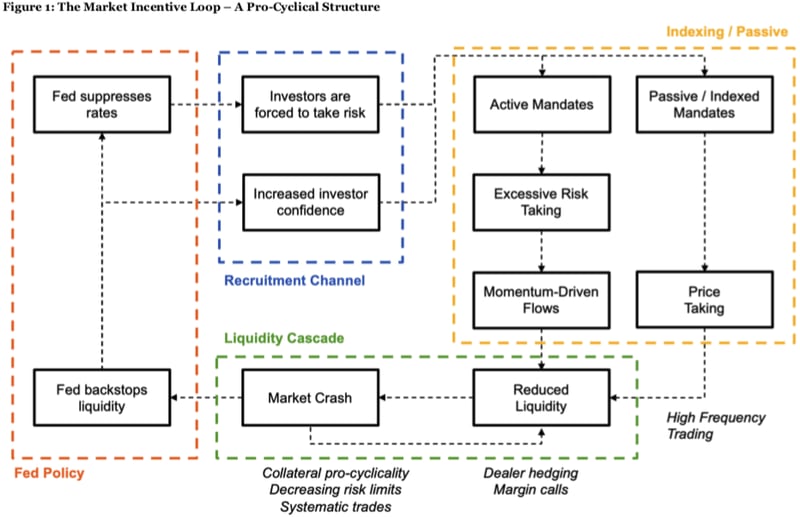
Quote To Start The Day: To better align our incentives with those of our members, we will stop participating in the practice of Payment for Order Flow.
Source: Public.com
One Big Thing In Fintech: An “anonymously” led startup called Millions has raised a $3 million seed round for its fintech company that’s currently giving away free money through its Twitter account. The concept, inspired by the likes of YouTuber David Dobrik, is partly aimed at attracting attention for the new company but is also setting the stage for a forthcoming business model of sorts, where brands could participate in giveaways more directly.
Source: TechCrunch
-Feb-03-2021-12-03-30-07-AM.gif?upscale=true&width=800&upscale=true&name=giphy%20(1)-Feb-03-2021-12-03-30-07-AM.gif)
Other Key Fintech Developments:
- InvestCloud eyes growth, expansion.
- BondView adds technology updates.
- Metaco, Cobalt partnered on trading.
- TrustLayer insurtech raising $6.6M.
- USDC is live on the Stellar network.
- Intuit buys app integrator OneSaas.
- JPM developing quant tech for funds.
- Axoni raises $31M in funding round.
- Embrace of buy-side interoperability.
- Tradeweb acquires Nasdaq platform.
- TickPick accepting Bitcoin for tickets.
- Current is facing exponential growth.
- Robinhood challengers are plotting.
- Curve added a Samsung executive.
- Altruist intros a portfolio marketplace.
- Divvy Homes taps $110M Series C.
- Checkout.com expanding leadership.
- CoinFlip exceeding 1M transactions.
- MackeyRMS, InsiderScore merging.
- Routefusion securing $3.6M in seed.
Watch Out For This: The days of executives choosing software for their employees based on IT compatibility or KPIs are gone. Employees now tell their boss what to buy. This is why we’re seeing more and more SaaS companies — Datadog, Twilio, AWS, Snowflake and Stripe, to name a few — find success with a usage-based pricing model.
The usage-based model allows a customer to start at a low cost, minimizing friction to getting started while still preserving the ability to monetize a customer over time because the price is directly tied with the value a customer receives. Not limiting the number of users who can access the software, customers are able to find new use cases — which leads to more long-term success and higher lifetime value.
While we aren’t going 100% usage-based overnight, looking at some of the megatrends in software — automation, AI and APIs — the value of a product normally doesn’t scale with more logins. Usage-based pricing will be the key to successful monetization in the future.
Source: TechCrunch

Interesting Reads:
- Acorns CEO talking micro-investing.
- AOC talks Capitol raid, eyes change.
- Google beats estimates, Cloud lags.
- Hedge funds walk away unscathed.
- Bezos to no longer be Amazon CEO.
- NY street food vendors eye reforms.
- Amazon plans to pay drivers $61.7M.
- Google shutting down Stadia studios.
- Why we’re hearing more on LiDAR.
- Uber is buying Drizly for cool $1.1B.
- Tesla recalls 135K cars due to tech.
- Bumble’s IPO raising $1B for growth.
- 5G is on a accelerating growth path.
- New bill takes aim at urban freeways.
Market Moving Headline: The dynamics that transpired in GameStop can be traced back to factors like Federal Reserve stabilization efforts and low rates, which incentivize risk taking.
“The growth of structured products, passive investing, the regulatory standpoint that’s been implemented with Dodd-Frank and dealers needing to hedge off their risk more frequently than not” are all part of a regime change that’s affected the stability of markets, said Kris Sidial, co-chief investment officer of The Ambrus Group.
“These dislocations happen quite frequently in small windows, and it offers the potential for large outlier events,” like the equity bust and boom of 2020, he said.
“Strength and fragility are two completely different components. The market could be strong, but fragile.”
The aforementioned dynamics of dealers’ risk exposure to direction and volatility causes violent crash dynamics to transpire.
See also: Payment for Order Flow (PFOF)
In February 2020, one-sidedness in the market by yield-seeking participants like target date funds — such as mutual funds — selling far out-of-the money puts on the S&P 500 exacerbated volatility. So did customers looking to buy puts in an increasing fashion for downside exposure.
“We’re in there buying puts, dealers are short puts and short stock,” Sidial said in a discussion on rising delta and volatility forcing dealers to sell into weakness to hedge.
“As people reach for those downside puts on SPX, it now reflexively has another implication on increasing volatility. Well, all those people that are carrying short volatility exposure in their book are losing money.”
In all, a new regime with knock-on effects is forming solely due to positioning in the market.
Source: Benzinga
Pictured: Newfound Research unpacks market drivers, implications of liquidity.

© 2025 Benzinga.com. Benzinga does not provide investment advice. All rights reserved.
Trade confidently with insights and alerts from analyst ratings, free reports and breaking news that affects the stocks you care about.